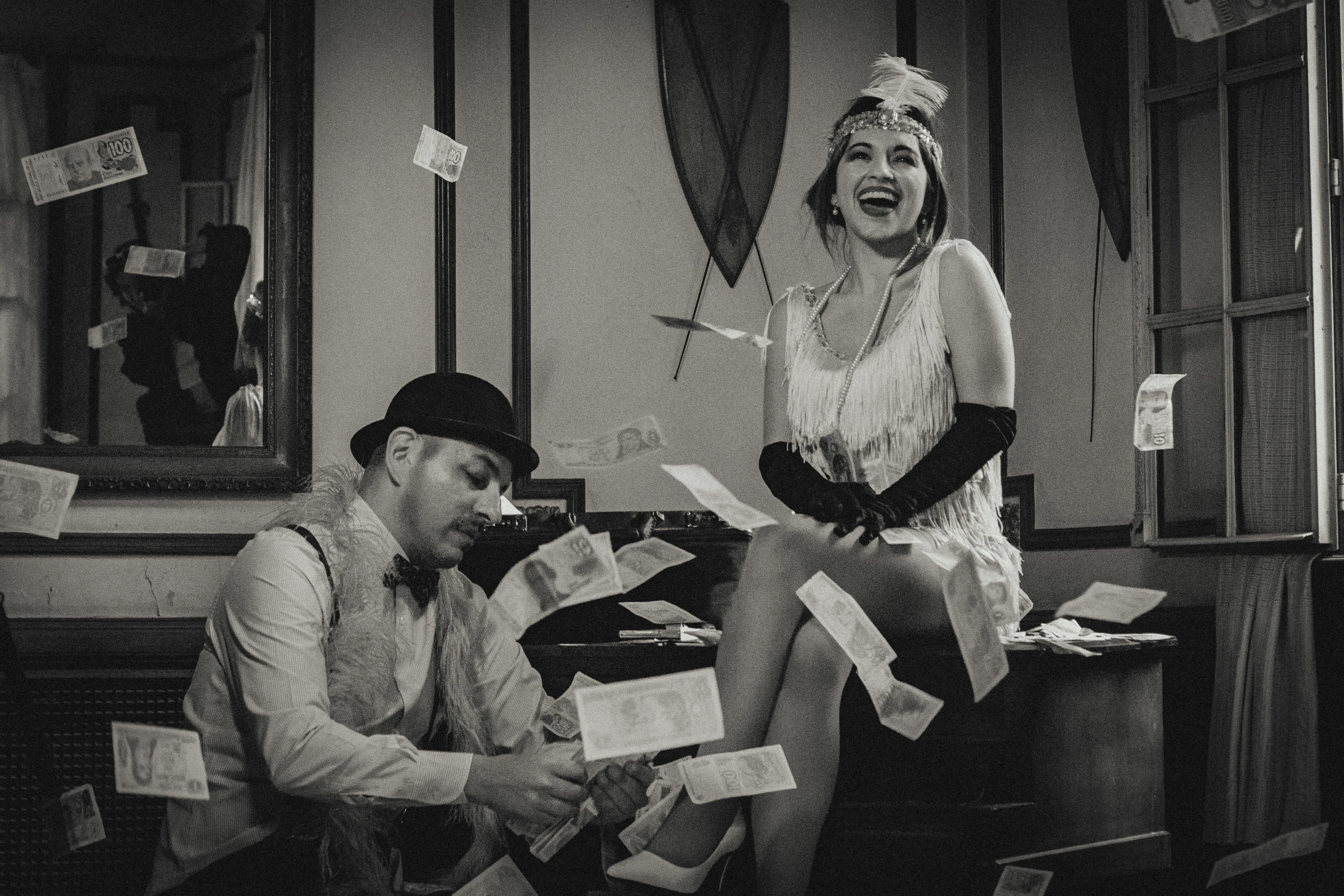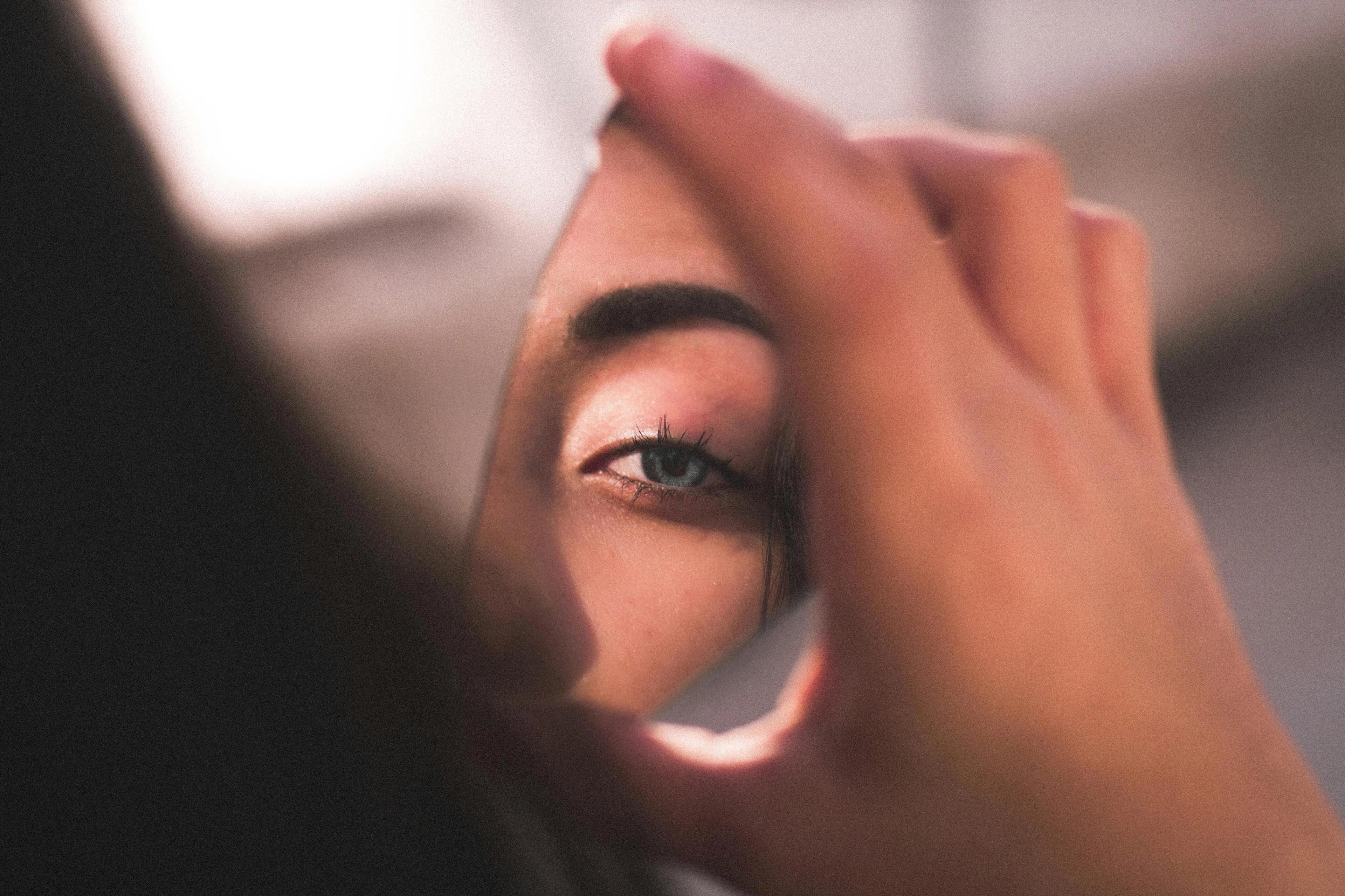How to stop buying things you don’t need
We’ve all been there. After a stressful day at work, a glossy ad, and a one-click check-out situation, we’re suddenly $200 poorer and on our way to adding yet another pile of clothes we’ll never wear to an already cluttered closet.
Why does this happen? And how can we stop buying stuff that won’t make us happier?
Let’s start with a few general tips to help you better align your spending with your values. We’ll then look at a completely different approach — one that isn’t included in any of the conventional advice but which was a total gamechanger for me and for many people I know.
The standard advice
How to stop buying stuff? Most standard advice involves little hacks – things like:
Increasing the barriers to purchasing: Don’t save your credit card info in your browser or phone, never use one-click checkouts, and avoid staying logged in to retail accounts. All of these things slow down the purchasing process, giving you more time to realise this isn’t something you actually want or need.
Forcing yourself to think the purchase through: This is usually done via a “wait before you buy” rule – whether that’s telling yourself you’ll “come back for it at the end”, instituting a 48-hour wait-time rule for online purchases, or noting down the purchases you’re considering and then making all of your buys at one, dedicated time every 30 days. The idea is to help differentiate the things you actually want from those that just seem exciting in the moment.
Removing triggers: Opt out of text notifications from retailers, install an ad blocker, unfollow retail accounts on social media, and find other coping mechanisms for emotional states that make you want to shop (you might decide to browse delicious recipes instead of retail sites or try watching a movie).
These behavioural hacks can work, but they don’t really address the psychology or mindset that leads us to clutter up our homes and spend money on things we don’t need in the first place. So instead of treating the symptoms of the consumer mindset, what if we could change it altogether?
Changing your mindset

If my own experience is any indication, you can change the way you think about shopping. The trick is fully understanding:
- why you shop
- The psychological research on purchases & happiness
- the opportunity cost of shopping
Understanding why you shop
My first job out of college was at a dramatic agency in Times Square. It seemed awesome – I would get to read plays, work with the author to improve them, and try to get them placed in theaters. However, it turned out that there wasn’t really any work for me to do – all the established clients already had an agent and the agency was living off licensing fees from its big hitters. I was bored, purposeless, and guilt-ridden for not finding something useful to do.
So I spent all of my lunch breaks…you guessed it …shopping. The concrete sense of accomplishment from finding an amazing deal at H&M, the bright colors & lights, even the walk through the hustle and bustle of Times Square — all of these caused me to feel at home and mission-driven rather than out of place and purposeless.
Finally, I realised I needed to switch jobs. When I did, my shopping slowed way down. I now felt useful at work, so I didn’t need to create an artificial mission or sense of accomplishment.
All this is to say – ask yourself: what drives you to shop? Perhaps your reasons stem from a similar sense of boredom or unfulfillment, or maybe it’s the opposite impulse –- wanting to relax & do something fun after a long, stressful work day. Whatever it is, it helps to know.
The psychological research on purchases & happiness
It’s not entirely accurate to say that shopping doesn’t make us happy – in fact, we often feel great right after buying something new.
The problem is that this type of happiness rarely lasts. It’s based on a newness and a sense of anticipation – the excitement while we wait for it to finally arrive or for the perfect occasion to try it out. So that newness — and with it the boost in mood — fades really quickly. One of my favorite studies summarises it like this:
“People adapt to repeated getting. The happiness we feel from eating the same food, from earning the same income, and from many other experiences quickly decreases as repeated exposure to an identical source of happiness increases” (O’Brien & Kassirer, 2018)
In short, we “habituate” to most feelings over time, including that short-term increase in happiness from an impulse buy. Once you’ve worn those new shoes once, the excitement you feel about them is just not what it was upon purchase – and that’s in a best-case scenario where they didn’t give you blisters.
Very interestingly, the O’Brien & Kassirer study found that there’s one type of purchase where our happiness is actually sustained longer-term – that’s a purchase that we make not for ourselves, but for others:
In Experiment 1, participants spent a windfall for 5 days ($5.00 per day on the same item) on themselves or another person (the same one each day).
In Experiment 2, participants won money in 10 rounds of a game ($0.05 per round) for themselves or a charity of their choice (the same one each round).
Although getting elicited standard adaptation (happiness significantly declined), giving did not grow old (happiness did not significantly decline; Experiment 1) and grew old more slowly than equivalent getting (happiness declined at about half the rate; Experiment 2).
Past research suggests that people are inevitably quick to adapt in the absence of change. These findings suggest otherwise: The happiness we get from giving appears to sustain itself.
In plainer language: the above suggests that, while personal rewards fade quickly, the joy of shopping for others doesn’t wear off nearly as fast, or (in the case of Experiment 1) at all.
Dunn, Aknin, & Norton found a similar result in an earlier study, suggesting that how you spend your money “may be at least as important as how much money you earn” and concluding that spending on others was associated with greater happiness than spending on yourself.
Then there’s the paper: “If money doesn‘t make you happy then you probably aren’t spending it right” which lists 8 tips to spend your money better, including prioritizing spending on experiences over material goods and using money to benefit others rather than yourself.
All of this is well and good – but knowing and doing are two different things. To truly stop the shopping impulse in its tracks, I had to replace it with something far more useful – and meaningful. This brings me to the gamechanger reframe I mentioned at the start.
The true opportunity cost of shopping
Let me bring you back to my first year in New York.
I’m spending recklessly and really don’t see an issue with it – after all, I’m very far away from needing to “save for retirement” and I have enough to pay my bills. So spending the other part of my brand new, just-out-of-college paycheck on some good meals, new clothes, household items – this all seems logical to me. I’m in no danger of going into debt, and isn’t life about enjoying small pleasures?

The change came when I zoomed out and moved beyond thinking about the opportunity cost for me and started thinking more generally about what else my money could buy…for anyone.
I’d always been aware that living in a country like the US meant I had considerably more resources than many in the world (even on a just-out-of-college income), and I’d always wondered how much of my money I should be giving away. But since I wasn’t super confident about the charity options out there – I mean there were so many, and did the money actually go where it was intended? – I felt uncomfortable donating more than a bit here and there.
Around this time, I read the book Doing Good Better, which totally changed my perspective. It turned out there was a body of research on charitable giving — other people were thinking about this stuff too. They were also acting on it – by investigating which programs were the surest bets. Finding out that there were thousands of hours of research leveraged into cost-effectiveness breakdowns & in-depth write-ups of highly effective programs meant that for the first time, I could be confident that my money could concretely prevent someone from suffering.
In short, when I realised that $5 could – with a very high degree of certainty – buy and distribute a malaria net that would protect someone from getting a disease killing thousands of children per day, that crappy $20 sweater that I might “grow into later” became way less appealing.
I still spend money on meals out and experiences. But my desire to shop for the sake of shopping – because I can – has basically stopped. This was the gamechanger for me – realising that my money had way more power than I thought it did. I wanted to use that power, rather than buying things I didn’t need.
Behavioural hacks can still help
That said, even when we know what we value – and what we don’t – we could still have trouble aligning this with our actions. If that rings true for you, I have two pieces of advice:
- Have you identified why you shop – and if you have, are you meeting that need in another way? For example, if you’re browsing retail sites at the end of a long day because you need a break from being responsible, are there other, more productive ways to get that break – ways that won’t deplete your savings and clutter up your house?
- You may need to institute some simple hacks (like the ones discussed at the start) to help align your emotional brain with your logical one.
One way to do this is to institute spending buckets – decide how much you’d actually like to spend on purchases vs other things, write it out, and stick to it. You may still end up with things you don’t need, but at least you’ll have set some limits.
You can also institute other types of buckets. For example, if you are similarly moved by how much your money could do for others, and giving back is something that you value, you could experiment with setting aside some portion of your disposal income for supporting high-impact charitable programs.
For example, many people I’ve spoken with want to support things like clean water, food, and freedom from disease for people who can’t take these things for granted, but let’s face it – browsing charity websites isn’t quite the dopamine hit as browsing retail sites. So if we do value helping those who have less, we may have to be more intentional about it.
I’ve personally found the giving pledges at Giving What We Can super helpful for aligning my actions with my values – taking a pledge is a way to hold myself accountable for what I actually want to spend my money on. (Full disclosure – yes, I do work there, but I took the pledge long before that!)
My own experience has been that —by committing in advance to donate a specific percentage of my income (which I then do through automated recurring donations to the charities I think are most impactful) – I can slow down the impulse purchase treadmill and replace it with meaningful acts of generosity. Bonus – like the psychological research we covered earlier – I’ve found this type of spending also brings a lot more personal fulfillment and lasting happiness.
(You can read more about why people take the Pledge here.)
Final thoughts
If we want our money to work for us — to truly bring meaning, joy, and alignment with our values — it helps to pause and ask what we’re really buying when we shop for things we don’t need. A sense of control? A mood boost? A way to fill time?
By redirecting even a small portion of that impulse — whether toward giving, experiences, or simply being more intentional — we’re not just spending differently. We’re living differently. And that, in the long run, tends to feel a lot better than another pair of shoes.
